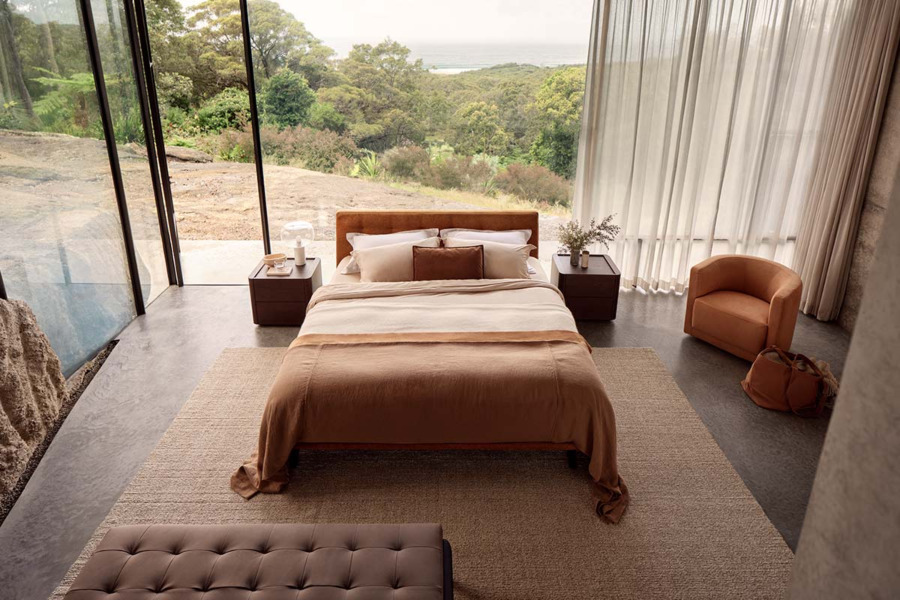Nous utilisons des cookies pour améliorer votre expérience. Pour respecter la nouvelle directive E-Privacy, nous devons demander votre consentement pour définir les cookies. Apprendre encore plus.
Select Shipping Country & Currency
Qu’est-ce que le feng shui et comment fonctionne-t-il ?

Qu’est-ce que le feng shui ?
Le feng shui est un art chinois ancien qui consiste à agencer les espaces de manière stratégique pour permettre une bonne circulation de l’énergie en accord avec les forces naturelles. Littéralement, « feng » et « shui » signifient « vent » et « eau ». On parle plus couramment de la « voie du vent et de l’eau ». L’idée de base est que tous les objets contiennent de l’énergie ; ainsi, la manière dont vous disposez meubles et éléments dans votre intérieur peut influencer votre bien-être chez vous.
Les praticiens du feng shui considèrent que l’équilibrage d’énergies opposées mais complémentaires augmente le flux d’énergie bénéfique, générant bonne santé, relations améliorées, chance et prospérité. La pratique indique où placer les objets par rapport aux portes et aux fenêtres, et comment utiliser les cinq éléments naturels dans la décoration.
Histoire et origines
Même si les débuts exacts du feng shui ne sont pas consignés, on admet généralement que la pratique est apparue sous la dynastie Zhou, il y a plus de 4 000 ans, et qu’elle s’enracine dans les croyances taoïstes relatives à la circulation de la force vitale (qi/chi). Parmi ses premières utilisations figurait le choix de l’emplacement des tombes en Chine. On croyait que le bon emplacement apporterait des bénédictions aux générations futures, tandis qu’un mauvais choix attirerait la malchance.
Le feng shui servait aussi à déterminer l’implantation idéale des bâtiments et des aménagements extérieurs, comme les jardins. La situation du terrain et des éléments environnants dictait l’orientation des façades et des fenêtres. Le plan de la Cité interdite, édifiée sous la dynastie Ming, suit les principes du feng shui : son axe nord-sud vise une position dominante et une meilleure circulation de l’énergie positive.
Le feng shui est antérieur à la plupart des styles d’aménagement utilisés en Occident, et ses éléments se retrouvent dans de nombreuses tendances d’intérieur très populaires aujourd’hui.
Principes de base
Le feng shui repose sur la croyance taoïste que tout (y compris les objets inanimés) contient le qi, ou force vitale composée d’éléments yin et yang. Pour favoriser une circulation optimale du qi et bloquer l’énergie négative, plusieurs principes et concepts sont combinés : la carte bagua, l’énergie du chi/qi, les cinq éléments et le yin-yang.
Les cartes bagua
Une carte bagua est une carte énergétique octogonale comportant huit secteurs autour d’un centre. On la superpose au plan d’un logement ou d’une pièce, le bas de la carte étant aligné sur le même axe que la porte d’entrée. Les huit secteurs correspondent à des domaines de vie (prospérité, relations, connaissance, renommée, etc.). Chaque secteur se voit attribuer des couleurs et des éléments spécifiques associés à cet attribut.
L’énergie du chi (qi)
Le taoïsme prône l’harmonie avec l’univers en équilibrant les forces yin et yang qui constituent le qi, l’énergie de la vie. En équilibrant les éléments porteurs d’énergies yin et yang, on estime que l’on améliore le flux de qi positif et que l’on bloque le qi négatif. Le feng shui vise à améliorer cette circulation via une disposition précise des meubles, décorations et même des bâtiments.
Les cinq éléments
Les cinq éléments naturels (bois, feu, terre, métal et eau) sont réputés influencer la façon dont on se sent dans un espace. Ils sont représentés par les matériaux utilisés dans la décoration et par des couleurs spécifiques selon les zones.
Yin et yang
La philosophie du yin et du yang repose sur l’idée que tout est composé d’énergies contradictoires et indissociables. Exemples d’énergie yang : le masculin, la lumière, le feu, le soleil et le sud. L’énergie yin renvoie au féminin, à l’obscurité, à l’eau, à la lune et au nord. Le feng shui vise à équilibrer yin et yang pour améliorer la circulation du qi.
Comment le feng shui analyse les espaces
Le feng shui peut orienter l’architecture et l’aménagement intérieur des logements, lieux de travail et espaces publics. Il peut guider la construction pour choisir l’implantation et l’orientation d’un bâtiment, ainsi que la disposition des portes, fenêtres et pièces.
Beaucoup préfèrent l’intégrer à la décoration intérieure. Il sert alors à décider de l’emplacement des meubles, des couleurs de murs, des matériaux, des formes de mobilier et d’autres éléments. Par exemple, placer le mobilier en « position de commandement » et à des endroits qui ne perturbent pas la circulation de l’énergie renforce le sentiment de sécurité et de bien-être. Les choix décoratifs (couleurs, objets) peuvent aussi modifier l’énergie d’une pièce.
Conseils pour utiliser le feng shui chez soi
Certaines personnes font appel à un expert en feng shui pour concevoir leur intérieur, mais vous pouvez aussi appliquer vous-même quelques principes simples.
Désencombrer pour améliorer la circulation de l’énergie
Un « audit des déchets du foyer » peut vous aider à éliminer les objets qui bloquent l’énergie positive et à réduire les déchets que vous produisez au quotidien. En retirant ce qui n’a pas sa place ni sa fonction dans une pièce, vous libérez et optimisez l’espace.
Optimiser les espaces de travail pour réussir
Différentes couleurs et matières correspondent à des objectifs précis. Par exemple, le violet renvoie à la richesse, et l’élément bois est associé à la vitalité et au mouvement ascendant. En combinant ces principes avec une disposition idéale du mobilier, vous pouvez aménager votre bureau à domicile pour augmenter la concentration et favoriser la réussite.
Placer les principaux meubles en position de commandement
Une implantation judicieuse du mobilier renforce la confiance et le sentiment de sécurité dans chaque pièce. Selon les experts, un meuble est en position de commandement lorsqu’il fait face à une porte ou à une entrée, avec le dos contre un mur plein. Cela permet de voir qui entre et de savoir ce qui se trouve derrière soi.
Mettre la décoration à contribution
Une déco à la fois belle et fonctionnelle peut remplir une double mission. Par exemple, les miroirs peuvent être positionnés pour améliorer la visibilité et refléter l’énergie, tandis que les plantes nourrissent l’énergie et soutiennent une démarche de décoration durable.
Bénéfices supposés
Il n’existe pas de preuves scientifiques directes des effets du feng shui, mais ceux qui l’appliquent rapportent divers bénéfices, tels qu’un plus grand sentiment de sécurité et une meilleure circulation de l’énergie. Réduire l’encombrement inutile et optimiser la disposition des meubles peuvent, naturellement, améliorer l’énergie et créer de l’harmonie dans toute la maison.
On dit que le feng shui procure notamment :
-
De meilleures relations grâce à l’équilibre d’énergies contradictoires, pour un environnement harmonieux.
-
Un sommeil de meilleure qualité en appliquant le feng shui dans la chambre.
-
Une meilleure santé mentale et physique via la réduction du stress.
-
Un mieux-être accru grâce à un intérieur conçu pour le confort et la détente.
-
Une prospérité renforcée en optimisant l’espace de travail pour améliorer la concentration.
Notre recommandation
Le feng shui n’est pas une baguette magique qui efface les sources de stress, mais il peut améliorer la circulation de l’énergie et renforcer les ressentis positifs chez vous. Parcourez votre intérieur pour repérer les zones où l’énergie est contrainte et les améliorations possibles. Commencez par de petits changements, comme introduire des éléments naturels ou réorganiser le mobilier. Une fois à l’aise avec la démarche, allez plus loin : changements de couleur, puis audit complet des déchets du foyer, afin de maximiser l’impact.


 eu
eu